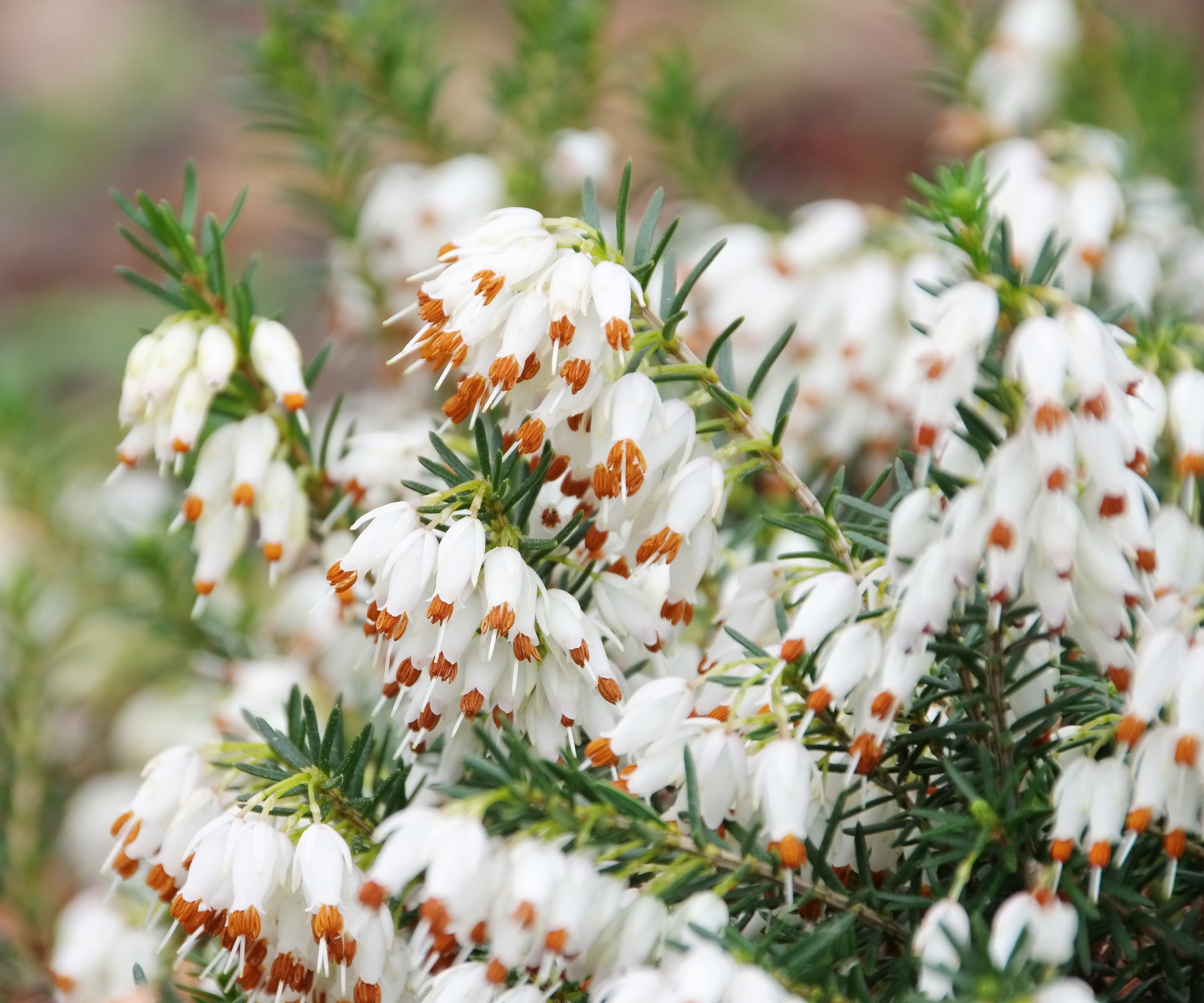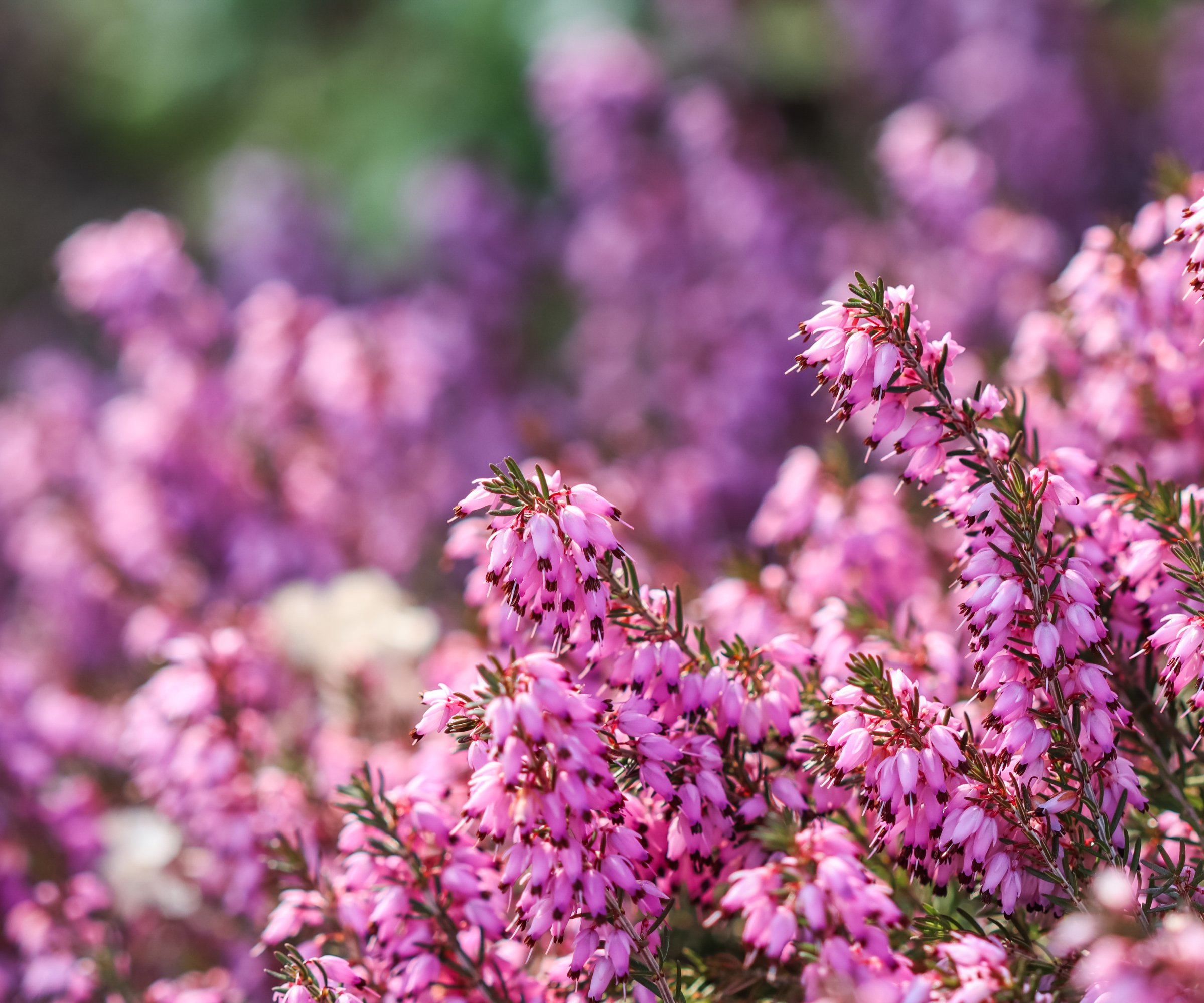How To Grow Winter Heath For Cold Weather Color
Grow winter heath plants for year-round mounding beauty that’s easy-care and rewarding. Evergreen and cold-hardy, they come in shades of pink, purple and white.

- Caring for Winter Heath
- Lighting Conditions
- Temperature & Humidity
- Watering Needs
- Fertilizing
- Soil & Compost
- Where to Plant Winter Heath
- How to Sow and Plant Winter Heath
- Trimming and Deadheading Winter Heath
- Winter Heath Pests, Problems, & Diseases
- Propagating Winter Heath
- Best Varieties of Winter Heath
- Frequently Asked Questions

Winter Heath Quick Facts
Botanical name: Erica carnea
Height: 6-12 in. (15-30 cm.)
Spread: 18-20 in. (45-50 cm.)
Sun exposure: Full sun, part shade
Soil requirements: Neutral, Slightly Acidic
Hardiness zones: USDA zones 4-9
When to plant: Fall
Flowering time: Late winter, early spring
Often confused with winter heather, heath makes an especially attractive addition to home landscapes and container gardens. Heath plants are prized for their ease of growth and year-round interest. Their beauty is furthered only by their abundance, with each mound yielding a profusion of stunning purple-pink blooms.
If you’ve never grown winter heath, you will delight in the plant’s hardiness. Since winter heath blooms in the winter, it adds both color and appeal for seasons to come.
Caring for Winter Heath
Lighting Conditions
To grow an Erica carnea plant in your garden, situate the plants where they can receive bright, direct sun. The planted mounds require at least 6-8 hours, or full sun, to perform their best. Though well-adapted to cooler climates, these plants grown in warmer regions can benefit from brief periods of shade through the hottest portion of the afternoon.
Temperature & Humidity
Winter heath grows best where temperatures are mild, between 60-80 F (15-26 C,) throughout summer. Some especially tolerant varieties can withstand both heat and humidity with proper care. This will vary by region but may require using shade cloth or other cooling techniques to avoid stress related to heat and/or moisture. Plants are generally considered hardy to cold, remaining evergreen throughout even the coldest of growing zones.
Watering Needs
Heath thrives when planted into loose, well-draining soil. Water only when the upper layer of the growing bed has dried completely, taking special notice during periods of prolonged drought. Winter heath does not tolerate excessively wet or waterlogged soils, which results in stunted growth, yellowing or wilting of foliage, and even the loss of plants.
Fertilizing
Heath plants only seldom require fertilizer. Most species of the plant are treasured for their ability to flourish where soil fertility is low. You can feed them in spring using a balanced feed, or compost for ericaceous plants.
Soil & Compost
Though winter heath is well-adapted to a wide range of growing conditions, your soil plays a key role in the overall health of garden beds. Established mounds will thrive when given a sandy loam. Slight acidity helps the plants continue to grow. Compost is often added to garden soils at planting time to improve drainage and amend the soil.
Sign up for the Gardening Know How newsletter today and receive a free copy of our e-book "How to Grow Delicious Tomatoes".
Where to Plant Winter Heath

The addition of winter heath to the landscape is an easy way to add color and appeal to otherwise barren spaces, but where does the winter heath plant grow best? Gardeners should first consider their region. Though quite tolerant to cold, heath may struggle where summer temperatures are especially warm. This includes much of the southern United States. Light, moisture, drainage, and soil fertility are vital in determining whether or not your garden beds are a good candidate for the plant.
How to Sow and Plant Winter Heath
Though it may be tempting to grow winter heath seeds indoors or in trays, most growers opt for the purchase of larger transplants. This helps to ensure a more rapid period of establishment and ensures that each one will grow true to type. Plants are most likely to be available in the fall when planting is ideal. Planting late in the season, several weeks before the arrival of the first frost, allows ample time for new mounds to begin taking root. Your heath plants’ growth will continue through autumn and winter, and will further establish themselves the following spring.
Prepare for planting by working the soil to a depth approximately twice the height and width of the plant’s root ball. After removing each transplant from its pot, the plant’s roots can be teased gently free. New plants should be positioned into the hole so that the crown of the plant aligns with the surface of the soil. After each has been backfilled, the heath should be watered to settle the plant into its new home and encourage growth.
Trimming and Deadheading Winter Heath
When it comes to winter heath, most gardeners consider deadheading as optional. Deadheading can help keep these plants looking tidy, but removing spent blooms throughout the season is unlikely to promote flowering. Annual pruning or trimming is often performed around the same time, in early spring. This allows greater control over the overall size and shape of plants. Experts suggest pruning stems just below each flower branch, making certain to avoid damage to woody growth.
Winter Heath Pests, Problems, & Diseases
Though relatively carefree, winter heath plants may be frequented by pests. Some of the most common visitors to heath include aphids, whiteflies, and scale insects. Large numbers, each feeding on the plant’s sap, can quickly cause the plants to yellow or change in appearance. Learning to identify the problem helps with the rapid treatment of the pests. Disease may also be an issue where growth conditions are less than ideal. Fungal infections are the most common and are spread through contact with pathogens.
Propagating Winter Heath

Winter heath plants are most commonly propagated through cuttings. Heath cuttings can be taken from spring through summer, by removing only the healthiest of stem segments. Strip small pieces of lower foliage, leaving only 1-2 sets of leaves atop the cutting. New cuttings should then be allowed to callus, before being moved into a moist rooting medium. Consistent moisture and humidity are essential to the process, with continued monitoring for the development of roots over the course of several weeks.
Best Varieties of Winter Heath
Though most varieties of winter heath offer lasting year-round beauty, colors, and textures can vary. This is especially true of varieties that bloom in interesting shades of pink or purple, or those that feature an extended bloom time. Such cultivars include ‘Kramer’s Red,’ ‘Winter White,’ and ‘Pink Spring.’
Frequently Asked Questions
What do you use winter heath for?
Winter heath is used to add year-round interest to the landscape, as well as pots and containers. Highly attractive plants are praised for their hardy nature and the ease with which they attract pollinators. Gardeners have found the most success keeping heath as a groundcover, growing it along slopes, and planting in low-fertility beds.
Can you divide winter heath?
Established heath plants can be divided to multiply and invigorate tired plants. Large mounds should be lifted from the ground in early spring before seasonal growth has resumed. Small segments can then be cut carefully, and divisions potted up into their own containers, or they can be positioned immediately back into garden beds.

Tonya Barnett has been gardening for 13 years. Flowers are her passion. She has transformed her backyard into a cut flower garden, which she regularly chronicles on her YouTube channel http://www.youtube.com/@tonyawiththeflowers.